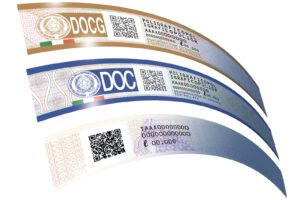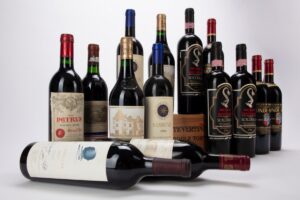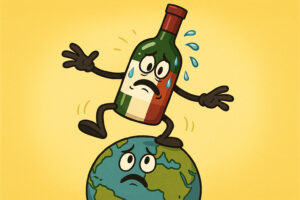The “Covid-19 semester” (March-August 2020) also weighs on the world wine trade, with an unprecedented contraction in the modern history of the sector. In non-EU countries - according to the elaborations of the Vinitaly-Nomisma Wine Monitor on a customs basis - the overall wine trade in the semester under consideration decreased by 15.2%, with a loss of 1.4 billion euros compared to the same period in 2019. The most significant decrease is related to bubbles (-28.8%), which “flattened” by the lockdown lose share in all 10 top importers, representing 92% of the non-EU market. In all this, Italian wine, although recording the worst result in the last thirty years, manages to contain the losses and to close the semester of health emergency at -8.6%, after an excellent start of the year. In the first two months, the trend was in fact +14.5%.
For the Veronafiere general manager, Giovanni Mantovani, “in another period, exports fell by almost 9% meant a crisis, today it is half a victory if you look at the competitors, but the glass is still half empty and the economic situation does not help. Our observatory highlights an increasingly asymmetrical scenario within the sector, and it is mainly quality small and medium enterprises, the backbone of Made in Italy, that pay the price. At Wine2Wine Exhibition & Forum ( November 22-24) we will examine the sector and commercial alternatives directly with international market players”.
The United States and Switzerland, respectively the first and third destinations for Italian wine, are the countries that have contributed to making the glass less bitter. On the one hand, in the USA (-8.1%) the performance was less dramatic than in France (-40.1%), which was cut by duties; on the other hand, Switzerland even went into positive territory (+7.5%). The difference in the final calculation of the semester between the 2 world production superpowers also lies in China, which marks an increasingly inclined plane (-38%) for both but whose weights, and their repercussions, are very different. In the end, so, if Italy does not laugh (-8.6%), France cries bitter tears (-27.7%).
For Italy, in fact, the deficit translates into 26 million euros; for France into 122 million euros. The United Kingdom market is also in crisis, where the Brexit clouds are also thickening: -9.5% for Italy and -21.6% for France, with sparkling wines in sharp contrast to the trend in recent years, especially for Champagne and similar (-41.9%), and Prosecco and other Italian bubbles (-17.4%). And it is precisely this type to fall more, even in absolute terms, with a drop of 38.5% for French sparkling wines and 12% for Italian sparkling wines.
For the head of the Vinitaly-Nomisma Wine Monitor, Denis Pantini, “the March-August semester delivers us a heavy decrease in wine imports from third markets where Italy seems to suffer less than France in the light of a more balanced distribution of its wines between on and off trade, even if the bad signals that are coming on the second wave of the spread of Covid-19 risk weighing down the loss even further, considering that usually the last quarter accounts for 30% of the year’s total exports”.
The semester also had a significant impact in terms of market share in the extra-EU among the 2 market leaders, with France losing 5 points and dropping to 29.3% while Italy rose to 23.5%. Overall, the value of wine imports into third countries in the period amounted to 7.7 billion euros, compared to 9.1 billion euros recorded in the same period of 2019. The top 10 buyers considered and all the top 5 non-EU importers were 8 out of the top 10: USA (-20.7%), UK (-6.8%), China (-35.5%), Canada (-7.9%) and Japan (-17.5%).
Paying for it is precisely the category that has grown most in recent years: sparkling wines, in fact, pay -28.8% and a negative trend in all markets of demand, with the U.S. that is worth a third of the drop in sales in value. Bottled sparkling wines lose half of their value (-14.7%), starting from China (-35.8%), with drops above average also from the USA and Australia. In general, the (showy) decrease of the average price is due to 2 factors: the great difficulties of the Horeca channel and consequently of the wines with higher value and the speculative conduct along the supply chain.
Copyright © 2000/2025
Contatti: info@winenews.it
Seguici anche su Twitter: @WineNewsIt
Seguici anche su Facebook: @winenewsit
Questo articolo è tratto dall'archivio di WineNews - Tutti i diritti riservati - Copyright © 2000/2025









































































































































































































